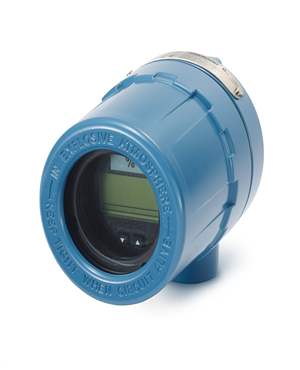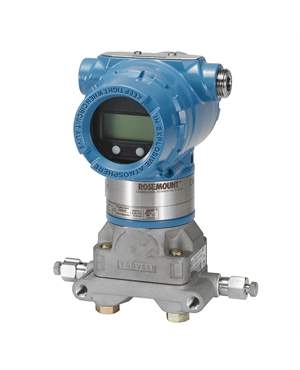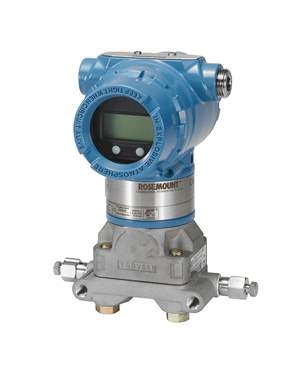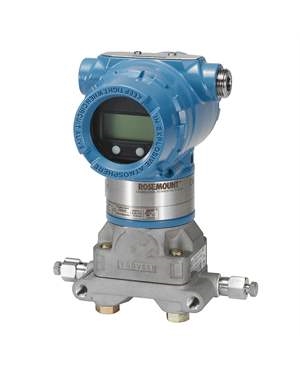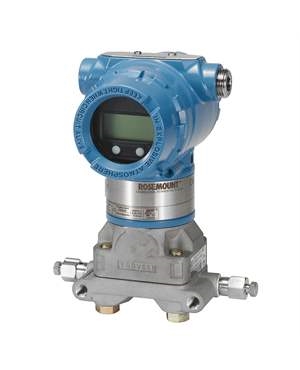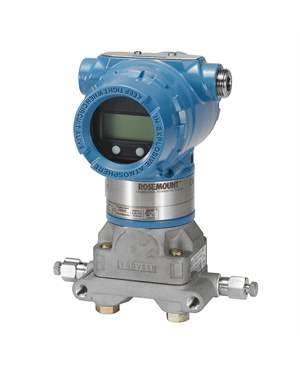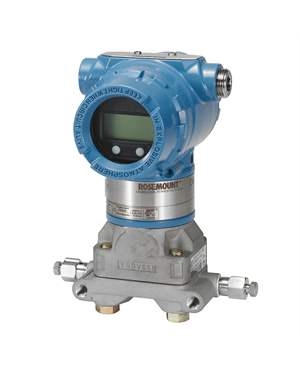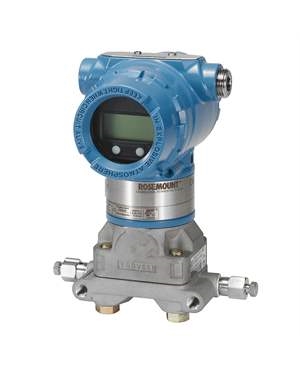Understanding the Impact of Pressure Fluctuations on Drying Performance
Brian Craig
July 11, 2023
Efficient drying processes play a critical role in numerous industries, ranging from food processing and pharmaceuticals to textiles and beyond. The ability to effectively remove moisture from products is vital for preserving quality, extending shelf life, and ensuring optimal performance. However, one often overlooked factor that can significantly impact drying performance is pressure fluctuations within the drying system.
Pressure fluctuations can arise from various sources, including equipment malfunctions, varying loads, and inadequate system design. These fluctuations can have far-reaching consequences, affecting not only drying efficiency but also the overall quality and consistency of the dried products. To tackle this challenge, employing pressure transmitters in drying processes can prove to be a game-changer.
In this blog post, we will delve into the intricate relationship between pressure fluctuations and drying performance. We will examine the causes and effects of pressure fluctuations, and highlight the pivotal role played by pressure transmitters in monitoring and mitigating these fluctuations.
Origins & Nature of Pressure Fluctuations in Drying Systems
Pressure fluctuations in drying systems don’t just “happen” they originate from several interacting sources within the airflow and mechanical components:
- Compressor / blower dynamics: Variations in blower speed, pulsations, or stalls introduce pressure oscillations.
- Valve cycling or dampers: Sudden opening/closing events cause pressure waves.
- Flow path constraints: Sharp bends, sudden expansions or contractions in ducting, or dirty filters create local instabilities.
- Load variation: As moisture load changes or product throughput fluctuates, resistance to airflow shifts, causing pressure transients.
- Thermal expansion and density changes: Temperature shifts alter gas density, which feeds back into pressure stability.
Recognizing these as systemic phenomena, not just sensor errors, is key to designing robust drying systems.

Importance of Accurate Pressure Measurements in Drying Processes
Accurate pressure measurements are critical for maintaining optimal drying conditions. Pressure directly affects the airflow, temperature distribution, and moisture removal capabilities within the drying system. By ensuring precise pressure control, operators can regulate the drying process more effectively, leading to improved efficiency and product quality. Accurate pressure measurements enable the identification of pressure fluctuations, allowing timely adjustments and interventions to maintain stable and desired drying conditions.
Effects of Pressure Fluctuations on Drying Performance
Pressure fluctuations within drying systems can have significant effects on the overall drying performance. These effects can impact the efficiency, quality, and consistency of the drying process, ultimately influencing the final product. Here are some key effects of pressure fluctuations on drying performance:
- Increased Drying Time and Energy Consumption: Pressure fluctuations can disrupt the airflow and temperature distribution within the drying system. When the pressure drops below the desired level, the drying process slows down, leading to extended drying times. Consequently, this increase in drying time directly translates to higher energy consumption, as more time and resources are required to achieve the desired moisture content.
- Uneven Drying and Moisture Content Distribution: Pressure fluctuations can create variations in airflow and temperature across the drying system. These variations can cause uneven drying and moisture content distribution within the product being dried. Certain areas may be subjected to higher or lower airflow, resulting in inconsistent moisture removal. As a result, some portions of the product may become over-dried, while others remain under-dried. This lack of uniformity affects product quality, leading to potential issues such as texture variations, reduced shelf life, and compromised structural integrity.
- Product Quality and Consistency: Pressure fluctuations can impact the overall quality of the dried product. Fluctuations in pressure can lead to changes in the drying rate and moisture extraction, resulting in alterations in the chemical and physical properties of the product. For example, in the food industry, pressure fluctuations during drying can lead to color changes, loss of nutritional value, and diminished taste and texture. Similarly, in pharmaceutical manufacturing, inconsistent drying caused by pressure fluctuations can affect the efficacy and stability of medications.
- Equipment Wear and Tear: Pressure fluctuations can put additional stress on the drying equipment. Frequent pressure spikes or drops can lead to increased wear and tear on the system components, including fans, blowers, valves, and filters. This can result in reduced equipment lifespan, more frequent maintenance requirements, and potential system failures. Unplanned downtime and increased maintenance costs can significantly impact production schedules and overall operational efficiency.
Benefits of Using Pressure Transmitters to Mitigate Pressure Fluctuations
- Real-Time Monitoring: Pressure transmitters provide real-time data on pressure levels within the drying system. This allows operators to promptly identify pressure fluctuations, deviations, or anomalies. Real-time monitoring enables proactive decision-making and the implementation of necessary corrective actions, reducing the potential impact of pressure fluctuations on drying performance.
- Process Optimization: By using pressure transmitters, operators can optimize the drying process by maintaining consistent pressure levels. This results in improved drying efficiency, reduced drying times, and lower energy consumption. Pressure transmitters facilitate the adjustment of drying parameters, such as airflow rates and temperature settings, based on accurate pressure measurements, ensuring optimal conditions for moisture removal.
- Quality Assurance: Pressure fluctuations can lead to uneven drying and variations in product quality. Pressure transmitters help mitigate these issues by enabling precise control of pressure levels throughout the drying process. Consistent pressure ensures uniform moisture removal, resulting in consistent product quality, reduced rejects, and improved customer satisfaction.
- Preventive Maintenance: Pressure transmitters also aid in preventive maintenance. By continuously monitoring pressure, they can detect abnormal pressure fluctuations that may indicate equipment malfunctions or system issues.
By understanding the how Pressure transmitters play a vital role in monitoring and controlling pressure within drying systems. They provide accurate pressure measurements in real-time, enabling operators to detect and mitigate pressure fluctuations. Implementing pressure transmitters in drying processes is a valuable investment, offering enhanced control and optimization of the drying performance. At The Transmitter Shop, we offers high-quality pressure transmitters, flow transmitters, level transmitters from trusted brands like Foxboro, Rosemount etc.
How Pressure Transmitters Help Detect and Control Fluctuations
Accurate pressure transmitters are central to maintaining stability and consistency in modern drying systems. They continuously measure pressure levels at key points and provide real-time data for intelligent control and optimization.
-
Continuous Pressure Monitoring
High-quality transmitters track air pressure across the inlet, chamber, and exhaust zones. Continuous monitoring helps operators detect variations early, allowing immediate corrective action before performance or product quality is affected.
-
Integration with Control Systems
Pressure transmitters communicate with PLC or DCS platforms that automatically adjust blower speed, damper position, or heater output. This closed-loop feedback ensures stable operating pressure, steady temperature distribution, and balanced airflow throughout the drying process.
-
Diagnostic and Predictive Insights
Smart transmitters provide additional data such as rate-of-change trends and historical pressure patterns. This information supports predictive maintenance by identifying potential equipment problems before they lead to downtime or reduced efficiency.
-
Optimizing Efficiency and Safety
Maintaining stable pressure not only improves drying uniformity but also enhances equipment safety. Transmitters detect overpressure or vacuum conditions that could damage system components or compromise the integrity of sensitive materials.
Industry Applications Where Pressure Stability Is Critical
Reliable pressure control is vital across industries where drying directly influences product quality and safety. Maintaining stable airflow and pressure ensures repeatable, high-efficiency results in the following sectors:
-
Pharmaceutical Manufacturing
Precise pressure regulation prevents moisture retention and temperature imbalance in granulation and tablet-coating dryers. Consistent drying safeguards product uniformity, potency, and stability.
-
Food and Beverage Processing
In dehydration tunnels and spray dryers, uneven pressure can cause color changes, texture variation, or uneven moisture distribution. Stable pressure ensures consistent drying, product safety, and shelf life.
-
Chemical and Petrochemical Processing
Solvent recovery and catalyst drying operations demand tightly controlled pressure to prevent contamination or reaction inconsistencies. Continuous transmitter monitoring keeps process conditions within safe and efficient limits.
-
Pulp, Paper, and Textile Production
Large industrial dryers rely on steady pressure to achieve uniform moisture removal and heat transfer. Proper pressure monitoring minimizes defects and energy waste while improving production speed.
-
Electronics and Semiconductor Manufacturing
In precision applications such as circuit board or wafer drying, even slight pressure changes can affect adhesion, coating quality, or residual moisture. High-accuracy transmitters maintain stable conditions for critical components.
Enhancing Drying Performance with Reliable Pressure Measurement
Consistent pressure is fundamental to an efficient and predictable drying process. When paired with high-accuracy transmitters, pressure control becomes a powerful tool for improving system performance, reducing operating costs, and extending equipment life.
Reliable pressure measurement helps maintain the delicate balance between airflow, temperature, and moisture removal. It enables operators to fine-tune drying parameters, minimize energy losses, and achieve uniform results batch after batch. Modern transmitters with digital communication and advanced diagnostics make this level of precision achievable in virtually any industry.
At The Transmitter Shop, we supply dependable, factory-tested pressure transmitters from leading brands such as Foxboro, Rosemount, and Vega. Each instrument is designed for accuracy, durability, and long-term reliability helping your plant maintain pressure stability, enhance drying performance, and protect product quality.
FAQs
1. Can pressure fluctuations in drying lead to product chemical changes?
Yes transient cooling or vapor reversal may locally change moisture gradients, affect reaction rates, or cause partial rehydration in sensitive substances.
2. What amplitude of pressure fluctuation is acceptable?
That depends on the system, but a common design tolerance is ± 2–5 % of nominal pressure. Larger deviations typically degrade performance significantly.
3. How quickly should control systems react?
A response time on the order of tenths of a second (0.1–0.5 s) is often necessary in systems with high dynamic demand to meaningfully suppress fluctuations.
4. Is adding buffer volume always a good fix?
Buffer volume helps but has limits too large volumes slow system responsiveness and can introduce lag or resonance.
5. Which fluctuation frequencies are most harmful?
Low-frequency fluctuations (0.1–5 Hz) tend to have the biggest effect on drying stability; mid to high frequency ones may show as audible pulsation but less severe drying impact.
Related Posts
- What are the Steps Involved in Calibrating Pressure Gauge?
- All Important Questions on Reconditioned Transmitters Answered
- Is Remanufactured Transmitter a Better Option than a New One?
- Differential Pressure Transmitters: How Do They Help in Flow Measurements?
- 3 Whats that Explain How Often You Should Calibrate Pressure Transducer
- Guidelines for Troubleshooting Pressure Transducers
- Learn How to Calibrate a Pressure Transmitter – II
- Learn How to Calibrate a Pressure Transmitter
- Know Three Interesting Uses of Pressure Transmitters
- Things to Check before Buying a New Pressure Transmitter
- A Look at Various Types of Industrial Transmitters – Part II
- A Look at Various Types of Industrial Transmitters Part I
- All Questions on Smart Transmitters and their Calibration Answered
- 3 Major Pressure Transmitter Technologies That Made the Device Popular
- An Unconventional Guide to Selecting the Right Pressure Sensor
- Factors To Be Considered While Differentiating $40 and $400 Pressure Transmitters
- Tips to Augment the Performance and Service Life of Pressure Transmitter
- Factors of Consideration When Choosing Pressure Transmitters
- 5 Most Popular Pressure Transmitter Technologies
- Tips to Improve the Performance of Pressure Sensors
- Factors to Consider When Choosing a Pressure Transmitter Manifold
- Safety Tips for Differential Pressure Transmitter Operation
- Impact of Shock and Vibration on Pressure Transducer
- Rosemount 3051S vs 3051C Transmitter – What is Your Choice?
- Rosemount 2088 Vs Rosemount 3051 – A Few Points of Differences Discussed
- Difference in Conventional Transmitters and Smart Transmitters
- How to Choose Diaphragm Seals for Your Application?
- How to Select Pressure Transmitter for Your Application?
- Remote Seals: Significance, Working Principle & Applications
- How Do You Calibrate A Flow Transmitter?
- What is Absolute Pressure Transmitter & how does it work?
- HART Communication Protocol: Overview, Working Principle, Benefits in Industrial Automation
- Absolute and Gauge Pressure Transmitters - Overview and Working Principle
- Flow Meter vs Flow Transmitter: Know the Difference
- How Do You Test for 4 to 20mA Signal in a Pressure Transmitter?
- Multivariable Transmitter: What Is It and How Does It Work?
- Pressure Transmitters vs. Pressure Transducers: Learn the Differential Characteristics
- Procedure to Calculate Accuracy of Pressure Transmitter Discussed
- Testing Pressure Gauges: Processes of Verification Test and Functional Test
- An Ultimate Selection Guide for Flow Transmitters
- The Benefits and Challenges of HVAC System Balancing
- Fluid Flow Isolation Techniques for Pressure Instrumentation
- Understanding Pressure Ranges and Units for Fluid System Monitoring
- Understanding the Impact of Pressure Fluctuations on Drying Performance
- Monitoring and Controlling Energy Production in Power Plants
- Common Challenges in Air Flow Measurement and How to Overcome Them
- Pressure Monitoring in Pump Systems: A Comprehensive Guide
- Exploring Density and Viscosity Measurement in Industrial Processes
- Pneumatic Pressure Controllers: A Safe Choice for Hazardous Areas
- A Practical Guide to Vacuum Measurement and Operation
- 4-20 mA Transmitter Wiring: Understanding 2-Wire, 3-Wire, and 4-Wire Systems
- Flow Measurement Challenges in Subsea Operations
- Flow Measurement Challenges in Subsea Operations
- Pressure Sensing Sensor Modes of Measurement Key Differences and Benefits
- Electromagnetic Flow Sensors for Abrasive and Corrosive Fluids
- Mass Flow Meters and Their Working Principles
- Best Explosion Proof Switches for Hazardous Environments
- Best Explosion Proof Switches for Hazardous Environments
- Furnace Flame Sensor Faults Everything You Need to Know for Safe Operation
- Pneumatic Pressure Controllers: A Safe Choice for Hazardous Areas
- A Practical Guide to Vacuum Measurement and Operation
- Understanding Electrochemical Detection: Principles, Techniques and Environmental Application
QUICK ENQUIRY
